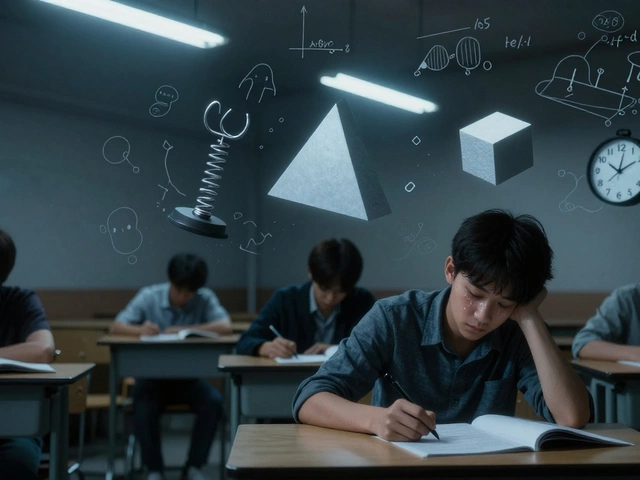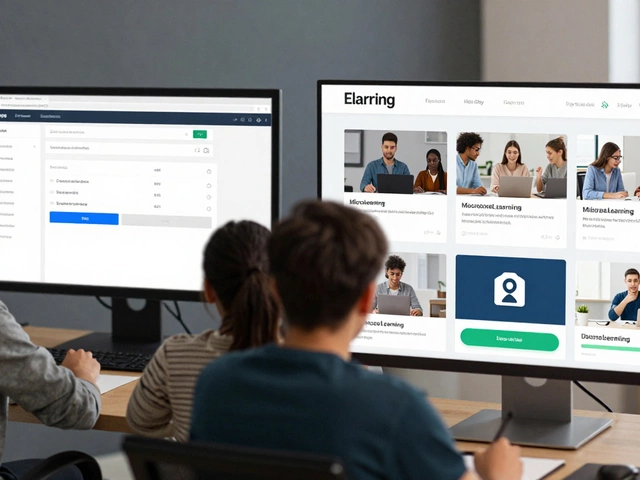Ever wonder where distance learning all began? Before laptops and smartphones turned every room into a potential classroom, distance learning looked a lot different. Picture this: It's the 1800s, and instead of logging into a Zoom class, students are mailing handwritten assignments as part of correspondence courses. Crazy, right?
Back in the day, correspondence courses were the real MVPs, paving the way for the educational revolution we see today. Fast forward a few decades, and you'd spot radio waves filling the educational gap. During the 1920s, universities jumped on board to broadcast lectures via radio. Imagine huddling around your radio like you would around Netflix today.
- Early History
- Technological Advancements
- Modern Day Distance Learning
- Tips for Effective Distance Learning
Early History
The concept of distance learning isn't as modern as some might think. Believe it or not, as early as the mid-19th century, education was being delivered without a classroom. In 1840, Sir Isaac Pitman in England started teaching shorthand by mailing texts and receiving responses through the post.
Jumping across the pond, this method caught on in the United States as well. Correspondence education really took off here with the establishment of institutions like the University of Chicago, which began offering correspondence courses in 1892. It made higher education accessible to those who couldn't make it to campus.
Postal Services: The Early MVPs
Memo to the famed Pony Express: You weren't just delivering letters; you were making education possible for people in remote areas! Postal services played a crucial role in the delivery and return of those early coursework materials. In many ways, these early systems foreshadowed today’s online learning.
Then, technology took another big leap when schools started experimenting with education through the radio in the late 1920s and 1930s. For many, these broadcasts represented their first encounter with audio forms of education, setting a precedent for modern e-learning platforms.
Building Blocks of Modern Learning
These early methods laid the groundwork for everything from night classes to the massive open online courses (MOOCs) of today. But back then, this idea of learning from a distance was revolutionary, pushing boundaries and challenging the norms of education. So, next time you're logging into an online course, think of those brave souls sending assignments by mail, the true pioneers of individualized learning paths!
Technological Advancements
Now let’s talk about how technology has seriously jazzed up distance learning. When you think of online learning, you probably envision video calls, online quizzes, and interactive forums. But technology's role in education didn't skip to that instantly. Let me walk you through it.
Post-World War II Innovations
After the Second World War, television became a big player. By the 1950s and 60s, universities leveled up from radios to TV sets. They began broadcasting courses to reach students in remote areas. It was education going prime time!
E-Learning Emergence
Skip ahead to the 1990s. The internet is just starting to get its feet wet, but educational institutions are already on it. This is when the term "e-learning" starts swimming into mainstream education conversations. Universities began offering online courses, changing access to education for good. Suddenly, the campus wasn't just physical.
The Dot-Com Boom and After
The late 90s and early 2000s saw the online learning space grow rapidly. Bits and bytes revolutionized learning methods. Universities launched full-fledged online degrees, allowing students worldwide to earn diplomas without stepping a foot on campus. The burst in internet usage opened doors to platforms like WebCT and Blackboard for course management. You could say this was the "big bang" for online education.
Today’s Digital Classroom
Fast forward to now, and you’re looking at sophisticated systems using AI to tailor learning experiences. Platforms like Coursera and edX have made university-level courses available to anyone with a wifi connection. The COVID-19 pandemic acted as a catalyst, pushing even more schools to embrace online learning as a lifeline.
Let's look at some quick stats:
| Year | Development |
|---|---|
| 1950s | Television lectures |
| 1990s | Internet-based courses |
| 2000s | Full online degrees |
| 2020 | Coronavirus pandemic pushes global shift to online learning |
So there it is, the evolution of distance education tech laid out. From snail-mail assignments to high-tech classrooms that fit in your pocket, technology has truly changed how we learn.

Modern Day Distance Learning
These days, distance learning is less about mail and radio waves and more about apps and platforms, and it's as common as your morning coffee. With the internet weaving its way into every corner of our lives, studying online has become super accessible. Today, you've got everything from universities offering full degree programs online to apps teaching you how to cook.
The breakthrough moment? The turn of the millennium saw the rise of platforms like Blackboard and Moodle, bringing online learning neatly into digital classrooms. Things kicked up another notch with cloud technology, making it easy to store vast amounts of educational content that's accessible from anywhere. Furthermore, video conferencing tools like Zoom have turned dining tables into active learning environments.
Why It Works
So, what makes modern e-learning such a hit? It’s all about flexibility and convenience. If you're a night owl, great! Classes are on demand. Have a job or kids to look after? No problem! Distance learning fits around your schedule like a glove. Plus, you get a personalized learning experience with tons of resources available at a click.
The Online Learning Landscape
Platforms like Coursera and edX offer courses from renowned universities. These platforms even offer certifications for learners seeking to boost their resumes. In 2023, over 220 million people enrolled in Massive Open Online Courses (MOOCs), highlighting this trend.
- Access to Expertise: Learn directly from industry professionals who know their stuff.
- Cost-Effective: Often cheaper than traditional schooling, especially when it cuts out things like commuting and moving.
- Variety: Thousands of courses across countless subjects mean you're spoilt for choice.
The possibilities for online learning are endless and ever-expanding as technology continuously evolves. Whether you want to learn a new skill, pivot your career, or just explore a hobby, the world of distance learning is yours for the taking.
Tips for Effective Distance Learning
Let's face it. While distance learning opens up a world of possibilities, it's not always a walk in the park. You need a game plan to stay on top of your studies from the comfort of your home.
Set Up Your Learning Space
Your environment can seriously impact your focus. Choose a dedicated study spot, free from distractions. It doesn’t have to be fancy. A small table and a good chair can do wonders. Make sure you've got all your study materials handy, so you don't waste time searching around.
Stick to a Routine
Your classes might be online, but treating your day like a regular school day can boost productivity. Wake up at a consistent time, have breakfast, and tackle your online learning tasks with a fresh mind.
Use Technology Wisely
You're in the tech era, so make use of productivity apps. Tools like Trello or Google Calendar can help track tasks and deadlines. Also, don’t hesitate to use educational apps for extra help or understanding tricky concepts.
Interact with Peers and Teachers
Feeling disconnected? Join class forums or study groups. Regular interaction helps break down the isolation walls. Plus, your classmates might have study tips or resources you haven’t considered.
Stay Physically Active
Sitting for hours isn’t just bad for your health; it harms productivity too. Include breaks for walks or quick workouts. It’s amazing how a bit of movement can refresh your brain.
Monitor Your Progress
Make it a habit to review what you’ve learned each week. It keeps you on track and highlights areas where you might need extra help. Simple checklists can be a lifesaver here.
Bonus Tip: Keep Your Mind Open
Distance education is evolving. New tools and methods pop up regularly. Be open to trying new approaches to studying. You might find something that works even better than your current routine.





